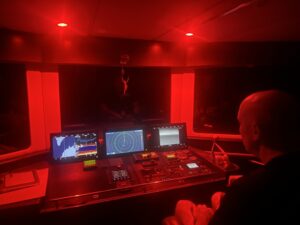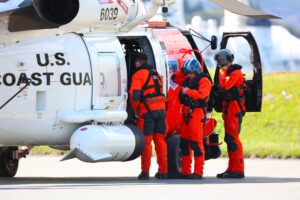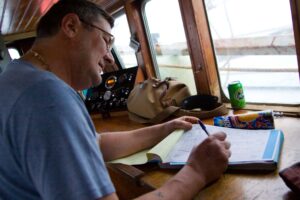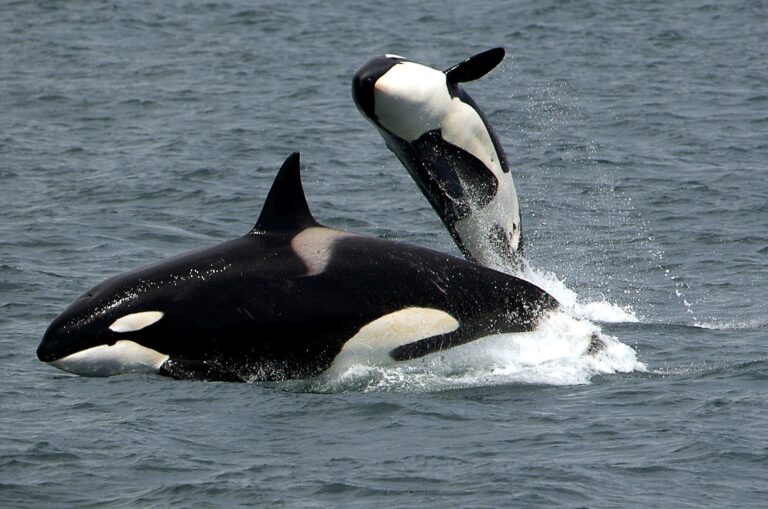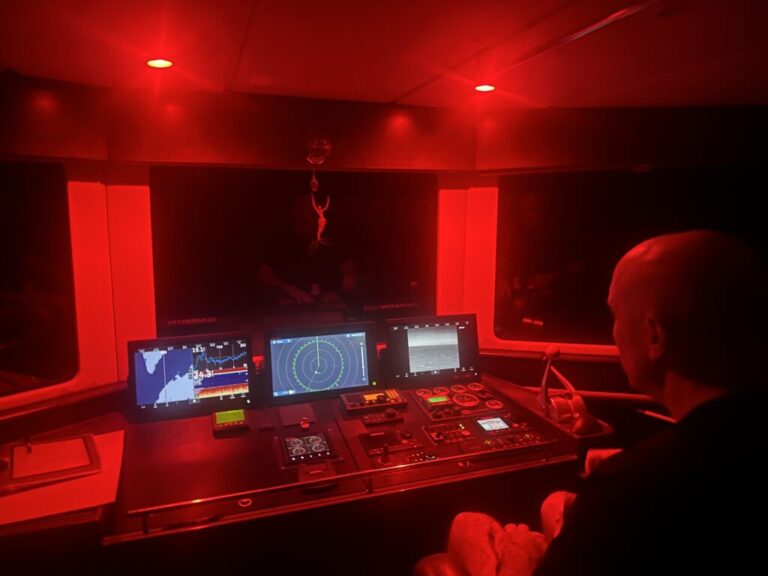
I am an over-the-top geek for birds. If the four nest boxes and five bird feeders in my backyard don’t sufficiently bolster my bird-nerd credentials, then the four pairs of binoculars and half a dozen or so bird field guides scattered about my house do.
I’m happy to report that some of my fishing and boating friends share this affliction. Watching and photographing birds is as much a part of our time together as fishing, crabbing or creekhopping. And luckily, Chesapeake Bay is one of the finest birding areas on the planet. Lying smack in the middle of the Atlantic Flyway — an avian superhighway, if you will — the Chesapeake offers superb, year-round birding, especially from a boat.
The first visitors we often see each spring are the thousands of ospreys that departed the Bay in late summer for warmer climes. These longdistance endurance fliers winter as far away as the Caribbean and South America, which sounds like my kind of vacation. Every spring, these fish-eating predators return within a week or so on either side of St. Patrick’s Day. They come to nest, breed and raise their young. Many folks on the Bay take their arrival as an opportunity to celebrate: Winter is finally over.

Osprey are a delight to watch when they go airborne in search of food, calling to one another with a distinctive, high-pitched tewp, tewp, tewp! They soar gracefully until they spot a fish, then crash down to the water — talons first — at terminal velocity. They contact the water with a huge splash and then lift themselves out with their wings, shaking the water from their feathers once they’ve gained a bit of altitude. The osprey’s next order of business is to situate its meal head-first to get the best aerodynamic efficiency on the way back to the nest.
This year I saw something I’d never seen off my home port of Annapolis, Maryland: a pack of about seven ospreys working over a school of breaking striped bass to which my pals and I were casting flies. The event served as a testament to the recovery of these once-endangered birds. I smiled as they crashed one after the other into the ball of bait the striped bass had herded. It’s something I wouldn’t have seen if I hadn’t been in a boat.
As spring leans toward summer, Chesapeake Bay funnels all sorts of northbound songbirds to its shores. This is when a trained eye can spot kinglets, grosbeaks, sparrows, orioles, tanagers, flycatchers and warblers flitting in and out of the trees. Warblers can be an especially humbling species, at least when it comes to identifying them. I can never seem to tell the difference between a prothonotary warbler and a palm warbler, or a common yellowthroat from a hooded warbler. Still, I have fun trying.

I usually see these colorful, animated and vibrant birds when I’m waist-deep in one of the Bay’s northern tributaries, casting flies for river herring and hickory shad on their annual spawning runs. The connection with the water makes the pastime all the more enjoyable.
Summer’s a great season to spot raptors. Red-tailed and red-shouldered hawks, as well as Cooper’s, sharp-shinned and broadwinged hawks, are a delight to watch, even when some hapless rodent or songbird becomes the star of the show. But it’s the northern harrier that I’m always excited to see on our fishing trips. We often see them elegantly gliding only inches above the marsh grass, seeming to float in midair.
Another species we see in the marsh is the great blue heron. These large birds with legs like stilts are out in force through the summer months, many of them gazing trancelike into the shallows, hoping an inattentive fish will swim by. (They often have much better fishing luck than we do.)
Check out our guide to spotting birds on the Bay:
As the first Arctic cold fronts plunge south each fall, migratory summer residents are replaced by visitors from the tundra. Whitethroated sparrows and slate-colored juncos lead the sparrow charge, closely followed by Canada geese, tundra swans, northern shovelers and an array of other migratory waterfowl. If we’re lucky, we might even get a few visiting snowy owls to the Eastern Shore’s seaside barrier islands.
Winter can put a damper on boating-related birding activities, but we still manage to see some incredible bird life when we do get out. Bad-weather days can be filled with a visit to one or more of the Bay’s many wildlife refuges. Among the birds we see — on and off the water — are courting bald eagles gathering nest materials and getting down to the business of romance.
This year, on the Blackwater River, I saw a bald eagle and his mate make a tactical strike on a flock of feeding black ducks. With one fantastic poof, a blizzard of feathers went flying, and the male eagle flew off with his catch. I watched as the pair took the victim up to a long-dead pine tree for dismembering. Though the whole gore-filled scene made me grimace, it was amazing to hear the pair call back and forth, their eerie chattering sounds booming across the calm, cold river. If you’ve never heard a bald eagle call out across the water — trust me — you need to put it on your bucket list.
Maybe your next boating adventure will include observing a few birds along the way. It’s an easy bug to catch, and for more than 40 years it has made my time on the Bay more pleasurable.
This article originally appeared in the October 2017 issue.



